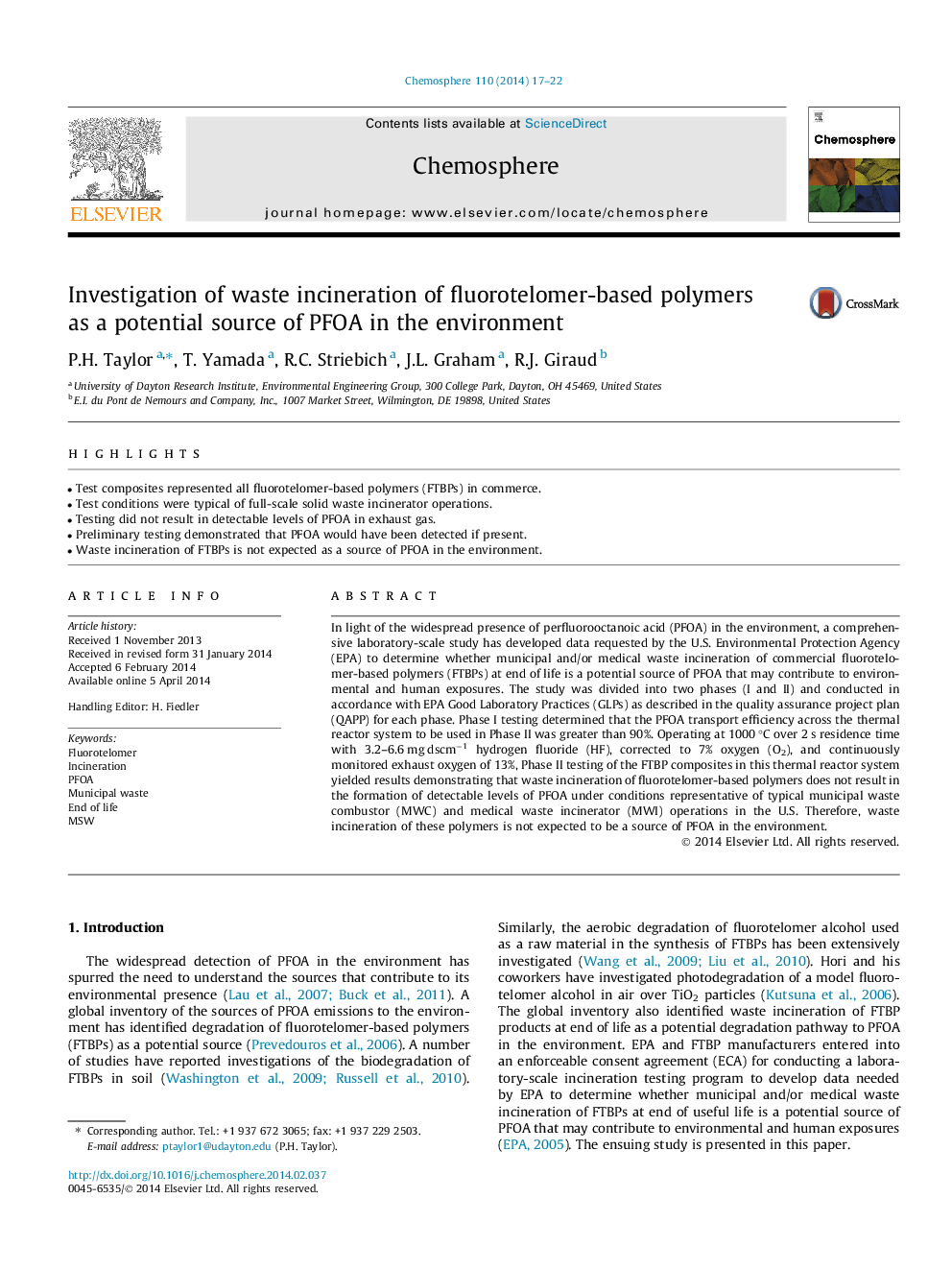| Article ID | Journal | Published Year | Pages | File Type |
|---|---|---|---|---|
| 4408726 | Chemosphere | 2014 | 6 Pages |
•Test composites represented all fluorotelomer-based polymers (FTBPs) in commerce.•Test conditions were typical of full-scale solid waste incinerator operations.•Testing did not result in detectable levels of PFOA in exhaust gas.•Preliminary testing demonstrated that PFOA would have been detected if present.•Waste incineration of FTBPs is not expected as a source of PFOA in the environment.
In light of the widespread presence of perfluorooctanoic acid (PFOA) in the environment, a comprehensive laboratory-scale study has developed data requested by the U.S. Environmental Protection Agency (EPA) to determine whether municipal and/or medical waste incineration of commercial fluorotelomer-based polymers (FTBPs) at end of life is a potential source of PFOA that may contribute to environmental and human exposures. The study was divided into two phases (I and II) and conducted in accordance with EPA Good Laboratory Practices (GLPs) as described in the quality assurance project plan (QAPP) for each phase. Phase I testing determined that the PFOA transport efficiency across the thermal reactor system to be used in Phase II was greater than 90%. Operating at 1000 °C over 2 s residence time with 3.2–6.6 mg dscm−1 hydrogen fluoride (HF), corrected to 7% oxygen (O2), and continuously monitored exhaust oxygen of 13%, Phase II testing of the FTBP composites in this thermal reactor system yielded results demonstrating that waste incineration of fluorotelomer-based polymers does not result in the formation of detectable levels of PFOA under conditions representative of typical municipal waste combustor (MWC) and medical waste incinerator (MWI) operations in the U.S. Therefore, waste incineration of these polymers is not expected to be a source of PFOA in the environment.
